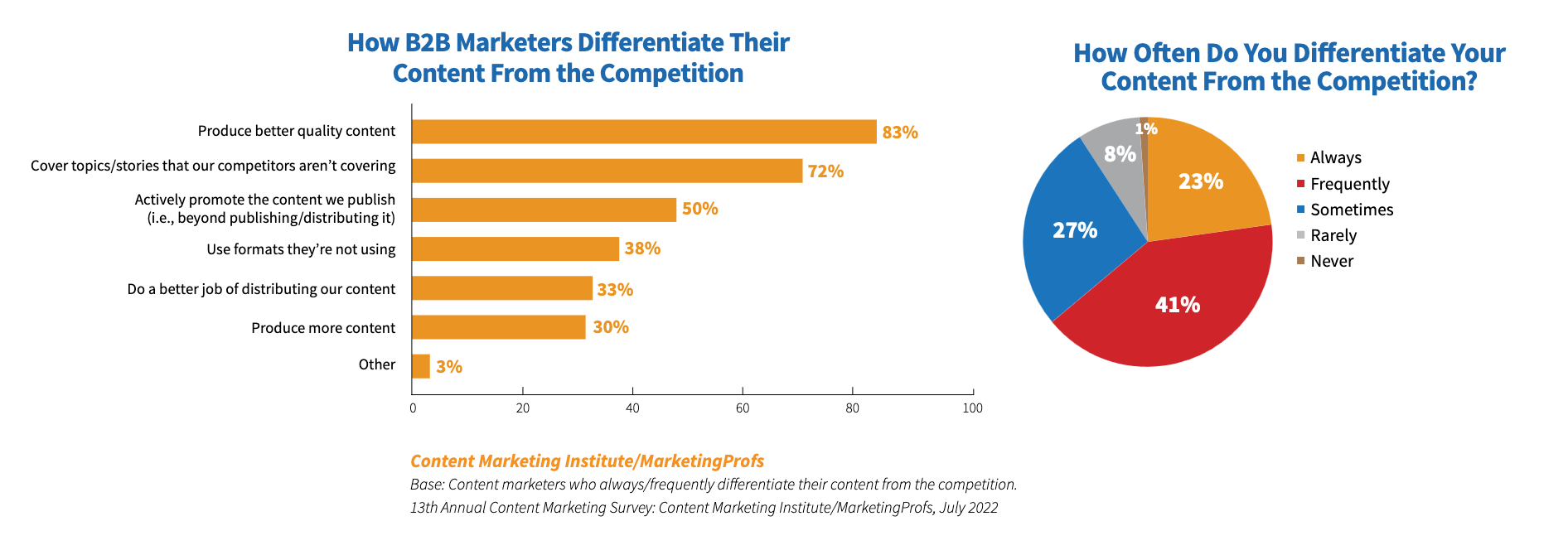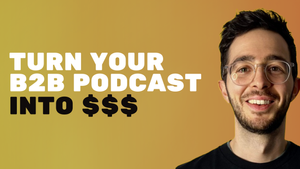Companies I talk to are often enthusiastic about starting their content marketing efforts, but they usually overlook a crucial step: figuring out how to bring their brand-new content to their target audience.
Sure, if you have the budget, you could push your content with paid ads. However, relying solely on this channel won't bring you all the benefits of creating a long-lasting relationship with your readers. For that, a newsletter is much better.
I know what you're thinking: "Nobody wants another newsletter; my inbox is already full of them!" But let me argue that despite the abundance of newsletters and the sorry state of our inboxes, this channel is by far the best for your content marketing because it’s one you own and control.
I won't go too deeply into why you should start a newsletter (that’s for another article). Instead, I’ll assume you’re already considering it and share common mistakes I’ve seen over the years. These insights come from my experience as a newsletter operator (over 600 newsletters sent with Labiotech.eu) and from helping companies create and maintain their newsletters (an example here).
So let's look at the first common pitfall:
Mistake n°1: Starting too late
If you ask most successful newsletter operators what their first regret is, they'll likely say they wish they'd started earlier. In newsletter and content marketing, time is of the essence. The sooner you start, the sooner you'll gain a head start on the competition.
So if you're already thinking about starting a newsletter and have an idea of what to write about, get to it now (or keep reading if you want to avoid other common pitfalls).
Starting is actually the easy part in my opinion. The hard part is to keep sending it on a regular basis and the most common cause of failed newsletters is simply a lack of commitment.
With the rise of newsletter tools like Substack and LinkedIn Newsletters, I see new projects popping up every week. They start strong, full of motivation and energy, sometimes with good ideas, but after a few weeks, most disappear because the creators didn't commit to the long-term effort.
If you want to create a newsletter for your company, securing long-term commitment from your executives is crucial. I've seen many clients give up after a few weeks or months because they got demotivated by low numbers, their bosses didn’t understand the investment, and they stopped the project without understanding why they failed.
Newsletters are a bit paradoxical. The more you want immediate results, the less likely you are to succeed. To succeed, you need to ignore the slow growth for months or even years before seeing any significant results. But once your newsletter is established, the benefits will exceed by far your other marketing channels.
Mistake n°2: Not knowing your audience
Niche newsletters are all the rage now because people want to read content that matters to them. The more specialized you get, the better.
This means doing your homework and researching your target audience. In B2B, this will likely be your customers (why would you do content marketing otherwise?), so you should already have a good idea of their interests. Additionally, regularly survey and talk to your readers to see if your content meets their needs and if there’s anything you could improve.
Knowing your audience also means keeping an eye on your competitors and seeing what kind of content they offer (you can use these tools to help with that).
The goal isn't to obsess over your competitors but to understand what’s out there so you can offer something better. By understanding your audience well, you'll be able to differentiate your content from others, which is crucial in content marketing, as the survey below shows:

Mistake n°3: Selling too much
People compromise when they subscribe to a newsletter. They expect that they’ll receive some value in exchange for their email data. This expectation is even higher in B2B, where the entertainment incentive is lower.
To avoid disappointing your subscribers and to ensure they share your newsletter with their peers, focus on educating them. So-called “newsletters” that are just company announcements and holiday greetings are worthless and often go unopened or straight to the trash bin.
A real content-based newsletter should prioritize educating your audience. For example, if you're selling a DNA synthesizer, your newsletter should provide information that your target customers need, not just updates about your product.
Of course, promoting your product should be part of your newsletter, and people will understand that it's one of the trade-offs they make for good content. However, promotion should take a secondary role and not overshadow the educational value.
Focusing on educating customers is also an important aspect of copywriting, so it’s good practice anyway.
Mistake n°4: Doing too many things
Over-ambitious newsletters fail more often than others. The more you try to do, the harder it is to keep going and for your audience to find clear value in your newsletter.
It’s more tempting to share your email data with a company that promises clear value than with one that tries to cover everything. Our time is limited, so the broader the promise, the less tempting it is (because we know we won’t have time to read it all).
Before thinking about all the things you could include in your newsletter, narrow it down to the one thing you should include. And just do that.
Mistake n°5: Lacking consistency
Keeping a consistent voice in your newsletter is very important. If you write in a casual tone one day and a very formal tone the next, your readers won’t connect with you on a personal level.
Take the BioPharmGuy newsletter, for example. It mostly makes fun of biopharma companies' names (which are often ridiculous) and shares some industry news. The sarcastic voice is very recognizable, and I read it mostly for the fun of it and because it makes me laugh.
I’m not saying you should go to such extremes, but make sure to keep a consistent tone and style.
Consistency also means sending your newsletter at a regular pace, be it weekly, monthly, or quarterly. The pace you choose depends on your content, but make sure to maintain the same rhythm. Otherwise, readers won’t know when to expect your next piece of content.
Mistake n°6: Focusing on the wrong goal
Numbers don’t matter as much in B2B newsletters. A thousand super-engaged subscribers are worth much more than 10,000 subscribers with a bad open rate.
You want to connect with your potential customers around a common interest. Imagine if a hundred people open your emails weekly. Can your sales reps cover this much ground every week? I don’t think so.
Set your KPI goals low because you won’t attract millions of people with a specialized B2B newsletter. I don't actually set any targets for subscriber growth, instead I focus on maintaining a high open rate and making sure I send out a newsletter every week. Time will do the rest.
Mistake n°7: Thinking too much about the design
The look of your newsletter doesn’t matter as long as the content is good. It doesn't need to be fancy or use images. Images might even increase your chances of ending up in the spam folder.
If you're worried about brand awareness and style, don't be. Just make sure your logo is visible at the top, and people will always associate the good content with your brand.
Your biggest priority should be the deliverability of your newsletter. Make sure you use a serious email service (like Mailchimp, ConvertKit, Substack, etc.) and don't make your email too heavy with images.
Never spam people, or your domain will get flagged, and you'll be penalized forever.
Mistake n°8: Failing to persevere
With a newsletter, it’s very difficult to achieve the same virality you can observe on social media, but the upside is that you own the audience you build, which is a significant advantage in the long run. Social media algorithms can change at any time and completely destroy your established reach (or worse, they can be bought by a billionaire megalomaniac who makes it totally irrelevant).
Patience is crucial. It takes time to build a loyal and engaged audience. You might not see immediate results, but perseverance will pay off eventually. Focus on delivering value with every issue of your newsletter, and your audience will grow organically over time.
A newsletter isn't just a one-way communication channel. Encourage your readers to engage with you and regularly ask for their opinions. Building a community around your newsletter can significantly increase its value. When readers feel like they are part of a community, they are more likely to recommend you to others, and that’s when the most rewarding part happens for your company.
I know, starting a newsletter is challenging, but remember, the key is to start now, commit to the process, and continually refine your approach based on feedback and performance data. Happy newsletter writing!





